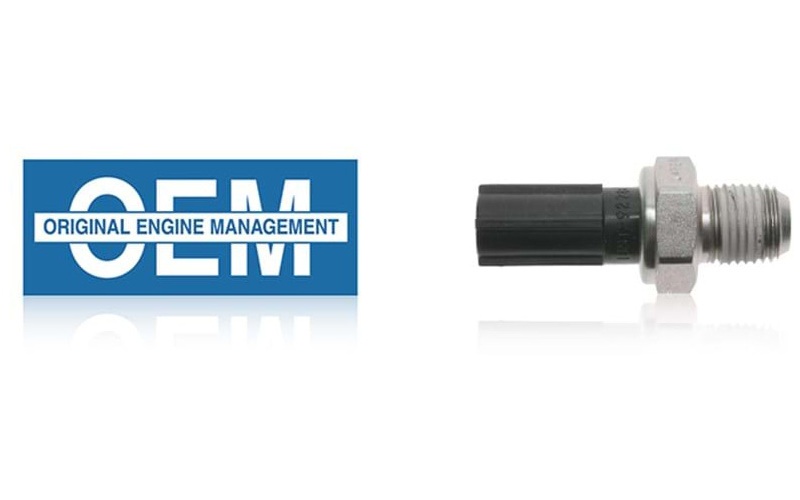2025 Ford Trucks: Incorrect Oil Usage and Repair Solutions
Using incorrect engine oil in Ford trucks can lead to significant mechanical issues, premature component failures, and costly repairs. Modern Ford truck engines are precision-engineered machines with specific lubrication requirements. When your truck doesn’t meet these requirements, the consequences can range from minor performance issues to catastrophic engine failure. Oil Specifications for 2025 Ford Truck […]
Using incorrect engine oil in Ford trucks can lead to significant mechanical issues, premature component failures, and costly repairs. Modern Ford truck engines are precision-engineered machines with specific lubrication requirements. When your truck doesn’t meet these requirements, the consequences can range from minor performance issues to catastrophic engine failure.

Oil Specifications for 2025 Ford Truck Models
The Ford truck lineup features several engine options across different models, each with specific oil requirements optimized for their design characteristics and operating conditions.
F-150 Engine Oil Requirements
The F-150 offers multiple engine options with the following oil specifications:
- 2.7L EcoBoost V6: SAE 5W-30 synthetic blend or full synthetic
- 3.3L Ti-VCT V6: SAE 5W-20 synthetic blend
- 3.5L EcoBoost V6: SAE 5W-30 full synthetic
- 5.0L V8: SAE 5W-30 synthetic blend or full synthetic
- 3.5L PowerBoost Hybrid: SAE 5W-30 full synthetic
- 3.0L Power Stroke Diesel: SAE 5W-30 diesel-specific full synthetic
Super Duty Oil Requirements
The new F-250, F-350, and F-450 Super Duty Ford trucks require:
- 6.8L V8: SAE 5W-30 synthetic blend or full synthetic
- 7.3L Godzilla V8: SAE 5W-30 full synthetic
- 6.7L Power Stroke Diesel: SAE 10W-30 or 5W-40 diesel-specific full synthetic
Ranger and Maverick Oil Requirements
Smaller Ford trucks in the latest lineup require:
- Ranger 2.3L EcoBoost: SAE 5W-30 full synthetic
- Ranger 3.0L V6: SAE 5W-30 full synthetic
- Maverick 2.0L EcoBoost: SAE 5W-30 full synthetic
- Maverick 2.5L Hybrid: SAE 0W-20 full synthetic
Critical Components Affected by Incorrect Oil
When you use improper oil in Ford trucks, several engine components face elevated risk of failure due to inadequate lubrication, excessive friction, or chemical incompatibility.
Variable Valve Timing Components
The Ford truck engines utilize sophisticated variable valve timing (VVT) systems that rely on precise oil pressure and flow. These systems include:
- Phaser assemblies that rotate the camshaft relative to the timing drive
- Solenoid valves that control oil flow to the phasers
- Small oil passages (often less than 1 mm in diameter)
When you use incorrect viscosity oil, particularly oil that’s too thick, these components may not receive proper lubrication or may operate sluggishly. Oil that’s too thin may not maintain adequate pressure for proper VVT operation. Failure symptoms include:
- Engine warning lights (particularly check engine light)
- Rough idle or hesitation
- Reduced power output
- Poor fuel economy
- Timing chain rattle on startup
Repair for VVT components typically involves:
- Draining the incorrect oil
- Flushing the engine with appropriate cleaning agents
- Replacing damaged phasers or solenoids
- Installing a new oil filter
- Refilling with the correct oil specification
Turbocharger Failures
The EcoBoost engines found in many Ford trucks utilize turbochargers that operate at extremely high temperatures and speeds. These components rely heavily on proper oil for:
- Lubrication of the turbo shaft and bearings
- Heat dissipation from internal components
- Prevention of carbon buildup
Using oil with inadequate high-temperature properties or insufficient detergent additives can lead to:
- Bearing wear due to oil breakdown
- Carbon deposits on turbine wheels
- Shaft seizure in extreme cases
Repair of turbocharger issues involves:
- Inspection of the turbocharger assembly
- Replacement of damaged bearings or complete turbo replacement
- Cleaning of oil feed and return lines
- Oil system flush to remove contaminants
- Installation of correct oil and filter
Main and Rod Bearings
Engine bearings provide a sacrificial, low-friction surface between rotating components like the crankshaft and connecting rods. In Ford trucks, these precision-machined components have extremely tight tolerances—often between 0.025 mm to 0.050 mm.
Incorrect oil can cause bearing damage through:
- Insufficient film strength (oil too thin)
- Poor flow to bearing surfaces (oil too thick)
- Lack of anti-wear additives
- Chemical incompatibility with bearing materials
Symptoms of bearing damage include:
- Knocking sounds that worsen under load
- Low oil pressure warnings
- Metal particles in oil
- Excessive oil consumption
Repairing bearing damage is major work involving:
- Engine removal in most cases
- Complete disassembly of the lower end
- Replacement of damaged bearings
- Possible crankshaft reconditioning
- Reassembly with precise torque specifications
- System flush and refill with correct oil
Timing Chains and Tensioners
The Ford trucks use timing chains rather than belts, and these components rely on oil for lubrication and tensioner operation. The timing chain system includes:
- Multi-link chains connecting the crankshaft to camshafts
- Hydraulic tensioners that maintain proper chain tension
- Guide rails and sprockets
Improper oil can affect these components by:
- Providing inadequate lubrication to chain links
- Failing to properly pressurize tensioners
- Accelerating wear on guide rails
- Contributing to chain stretch
Failure symptoms include:
- Rattling noise, especially on startup
- Engine misfire
- Loss of power
- Eventual catastrophic engine damage if timing jumps
Repair procedures involve:
- Front cover removal
- Timing chain system inspection
- Replacement of worn components
- Verification of correct timing
- System reassembly with new gaskets
- Oil system flush and refill with correct specification
Oil Pump Damage and Pressure Issues
The oil pump is the heart of the engine lubrication system in Ford trucks. These pumps operate with specific oil viscosities to maintain proper pressure throughout the engine.
Pressure Relief Valve Problems
Using oil that’s too thick can cause:
- Excessive pressure buildup
- Relief valve sticking in open or closed positions
- Premature pump wear due to increased load
Conversely, oil that’s too thin may:
- Fail to build adequate pressure
- Cause relief valve to remain open
- Result in insufficient lubrication to critical components
Repair involves:
- Oil pump removal and inspection
- Relief valve cleaning or replacement
- Pump gear or rotor examination
- Pressure testing after reassembly
- System flush and refill with correct oil
Oil Pickup Tube and Screen Issues
The oil pickup tube draws oil from the pan through a screen to prevent debris from entering the system. Incorrect oil can lead to:
- Screen clogging from increased sludge formation
- Oil aeration issues with incorrect viscosity
- Cavitation damage to the pickup tube
These problems require:
- Oil pan removal
- Cleaning or replacement of the pickup tube and screen
- Inspection of the oil pan for contamination
- Reassembly with new gaskets
- System flush and correct oil refill
Long-term Engine Block and Cylinder Head Damage
Extended use of incorrect oil can lead to severe damage to major engine components in Ford trucks.
Cylinder Wall Scoring
Inadequate lubrication can result in:
- Vertical scoring of cylinder walls
- Piston ring damage
- Increased blow-by and compression loss
These issues typically require:
- Complete engine disassembly
- Cylinder measurement and inspection
- Possible reboring or cylinder liner installation
- New piston and ring installation
- Complete engine rebuild
Cylinder Head and Valve Train Issues
The complex cylinder heads in Ford truck engines contain numerous oil passages that supply the valve train. Incorrect oil can lead to:
- Camshaft lobe wear
- Rocker arm failure
- Valve stem and guide damage
- Carbon buildup on valves
Repair procedures involve:
- Cylinder head removal
- Valve train component inspection
- Camshaft measurement
- Replacement of damaged components
- Valve job if necessary
- Reassembly with correct oil
Identification of Oil-Related Damage in Ford Trucks
Detecting oil-related issues early can prevent catastrophic failure in Ford trucks.
Warning Signs
Key indicators of oil-related problems include:
- Dashboard warning lights (oil pressure, check engine)
- Unusual engine noises (knocking, ticking, rattling)
- Decreased performance or fuel economy
- Blue exhaust smoke
- Excessive oil consumption
- Dark, dirty oil or visible metal particles during oil changes
Diagnostic Procedures
Professional diagnostic steps include:
- Oil pressure testing with mechanical gauge
- Oil analysis to detect contaminants and wear metals
- Borescope inspection of cylinder walls
- Electronic diagnostic scans for related fault codes
- Engine compression and leak-down testing
Preventive Measures and Remediation
If incorrect oil has been used but damage has not yet occurred, immediate action can prevent failures.
Immediate Action Steps
- Drain the incorrect oil completely while engine is warm
- Remove and replace the oil filter
- Consider using an engine flush product if recommended by Ford
- Install the correct oil type and viscosity
- Run the engine at idle for several minutes to circulate new oil
- Perform another oil and filter change after 1,000 to 3,000 kilometers
- Monitor for any unusual symptoms during this break-in period
Professional Intervention
For high-performance engines or when symptoms are already present:
- Compression testing to check for existing damage
- Oil pressure testing to verify system integrity
- Removal of oil pan to inspect for debris
- Possible partial disassembly for inspection if warranted
- Electronic recalibration of adaptive parameters if necessary
Five Facts About 2025 Ford Trucks and Oil-Related Issues
- The high-pressure fuel injection pumps in EcoBoost engines are actually lubricated by engine oil, not fuel, making them particularly vulnerable to oil-related failures.
- Ford internal testing revealed that using incorrect oil viscosity in the new models can increase engine operating temperatures by up to 15°C under heavy load conditions.
- The variable oil pump used in F-150 PowerBoost hybrid engines can detect oil viscosity differences as small as 2 centistokes and adjust pressure accordingly, but this adaptation has limits that you can exceed with incorrect oil.
- The aluminum-silicon cylinder lining technology used in newer Ford truck engines is more sensitive to incorrect oil formulations than traditional cast iron blocks, potentially experiencing 3-5 times faster wear rates.
- Laboratory analysis of oil samples from Ford trucks showed that using incorrect oil specifications can increase wear metal content by over 300% within just 5,000 kilometers of operation.
Questions and Answers
What immediate symptoms might I notice if I’ve accidentally used the wrong oil in my Ford truck?
- Initial symptoms can include the check engine light illuminating, unusual ticking or knocking noises (particularly during cold starts), reduced power delivery, hesitation during acceleration, and decreased fuel economy. You might also notice the oil pressure gauge reading abnormally high (with oil too thick) or low (with oil too thin). In turbocharged EcoBoost engines, you may experience delayed turbo response or whistling noises. These symptoms typically appear within the first few hundred kilometers of driving with incorrect oil.
How soon should I change the oil if I realize I’ve used the wrong type?
- You should change the oil immediately upon realizing the error, regardless of how recently you changed it. Even a short period of operation with incorrect oil can cause accelerated wear or damage to precision components. If you’ve driven less than 100 kilometers with the wrong oil and haven’t noticed any symptoms, a simple oil and filter change may be sufficient. If you’ve driven further or are experiencing symptoms, a more thorough oil system flush followed by a fresh oil change is recommended, with another oil change after 1,000 kilometers to remove any remaining contaminants or wear metals.
Can using the wrong oil viscosity void my warranty on Ford trucks?
- Yes, using oil that doesn’t meet Ford specifications can potentially void warranty coverage for any damage determined to be caused by improper oil use. Ford warranty terms specifically require adherence to recommended maintenance procedures, including the use of correct fluids. If an inspection reveals that engine damage resulted from incorrect oil viscosity or formulation, repairs for affected components may not be covered. This is particularly true for high-stress components like turbochargers, variable valve timing systems, and bearings. To maintain warranty coverage, always use oil that meets the specifications listed in your owner’s manual.
Is synthetic oil always better than conventional oil for Ford trucks?
- Synthetic oil is indeed superior to conventional oil. Modern Ford engines with features like turbocharging, variable valve timing, and high compression ratios operate under conditions that conventional oils struggle to handle. Synthetic oils offer better high-temperature stability, improved cold-flow properties, enhanced wear protection, and longer service life. The EcoBoost engines particularly benefit from synthetic oil’s resistance to thermal breakdown under the extreme heat generated by turbocharged operation. While some older engines could operate acceptably with conventional oil, the precision components in new models genuinely need synthetic oil’s superior properties to achieve performance and longevity.
How does using diesel oil in a gasoline engine (or vice versa) affect a Ford truck?
- Using diesel-specific oil in a gasoline engine can cause significant problems due to the different additive packages. Diesel oils contain higher levels of detergents and dispersants that can affect emissions control systems in gasoline engines, potentially damaging catalytic converters and oxygen sensors. Conversely, using gasoline oil in a diesel engine is even more problematic. Diesel engines, particularly the 6.7L Power Stroke, require oils with higher zinc and phosphorus levels to protect against the increased pressure and soot generation. Using gasoline oil in a diesel can lead to accelerated camshaft and valve train wear, injection pump failures, and excessive deposit formation. In either case, the incorrect oil should be drained immediately and the appropriate oil installed.
What parts are most likely to fail first when using the wrong oil viscosity?
- The components most vulnerable to incorrect oil viscosity are those with the tightest tolerances and highest precision requirements. Variable valve timing components typically fail first, with symptoms appearing within 5,000-10,000 kilometers of incorrect oil use. Turbocharger bearings are also highly susceptible, particularly when oil is too thin or lacks proper high-temperature stability. In EcoBoost engines, the high-pressure fuel pump can experience rapid wear with incorrect viscosity. With prolonged use of wrong viscosity oil, main and rod bearings begin to show wear, manifesting as engine knocking under load. Timing chain tensioners and oil pump pressure relief valves also commonly exhibit early failure when the viscosity is incorrect.
If I’ve been using the wrong oil for an extended period, is an engine flush recommended before switching to the correct oil?
- If you’ve used incorrect oil for more than 5,000 kilometers, a professional engine flush generally ensures a safe switch to the correct oil. Extended use of improper oil creates sludge, varnish deposits, and debris that standard oil changes often fail to remove. The type of flush plays a crucial role—aggressive chemical flushes can dislodge debris that circulates and causes secondary damage. Instead, a technician should perform a gentle flush with a specialized product approved for your engine, then install the correct oil and a new filter. Afterward, schedule a follow-up oil change within 1,000–2,000 kilometers to clear out any remaining contaminants loosened by the initial flush and fresh oil.



